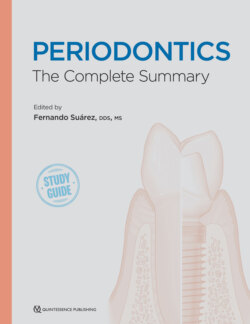Читать книгу Periodontics - Fernando Suarez - Страница 67
На сайте Литреса книга снята с продажи.
DIABETES MELLITUS
ОглавлениеAccording to the Centers for Disease Control and Prevention (CDC), an estimated 9.4% (30.3 million) of the U.S. population are diabetics, and almost 24% of this population (7.2 million) are undiagnosed.30 The American Diabetes Association classifies diabetes based on its pathophysiology into the following categories:
Type 1 (5% of diabetics): Caused by autoimmune destruction of the pancreatic β-cells. This results in inability of the pancreas to produce insulin.
Type 2 (90%–95% of diabetics): Characterized by insulin resistance, eventually leading to loss of β-cell insulin secretion.
Gestational (2%–10% of pregnancies): Onset usually during the second or third trimester of pregnancy. These individuals are more likely to develop Type 2 diabetes later in life.
Other: Examples include diseases of the exocrine pancreas, and drug- or chemical-induced syndromes.
Diabetes is considered another major risk factor for periodontal disease. The mechanisms that link diabetes to periodontal disease have been described as associated with the interaction of the advanced glycation end products (AGEs) with their receptor (RAGE). This interaction alters cell function, increases levels of reactive oxygen species, and increases the RANKL/OPG, therefore altering bone homeostasis and eventually leading to increased tissue destruction.31
